This black, astringent fruit has become a specialty. People "perform circus acts" on trees to harvest it ( Video : Duong Nguyen).
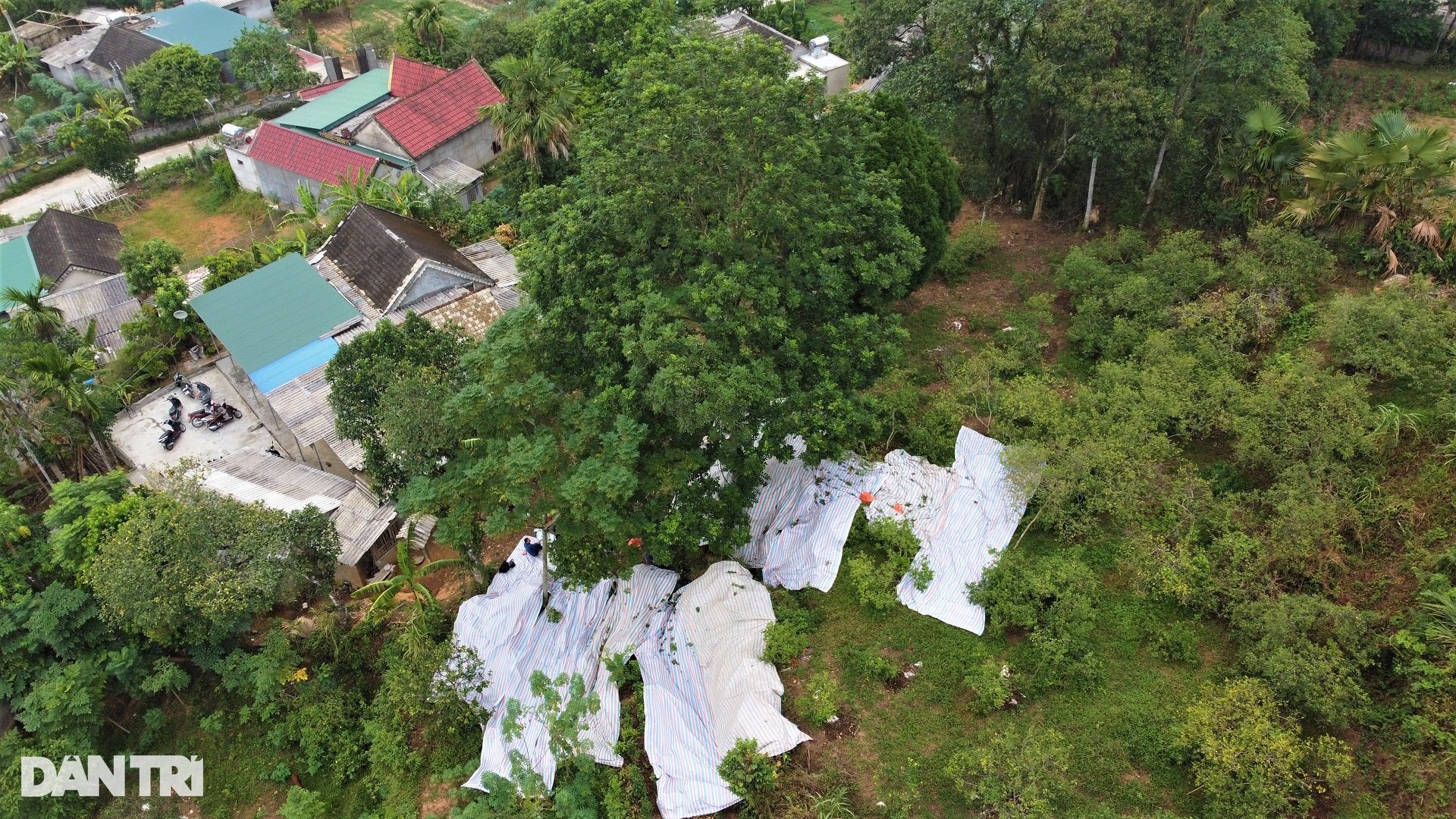
Huong Son District ( Ha Tinh ) is considered the capital of black canarium trees. The most concentrated areas are in the communes of Son Ninh, Son Phu, Son Bang, Kim Hoa, Son Tien. Here, each house grows 1-15 canarium trees. The tree roots are all decades old.
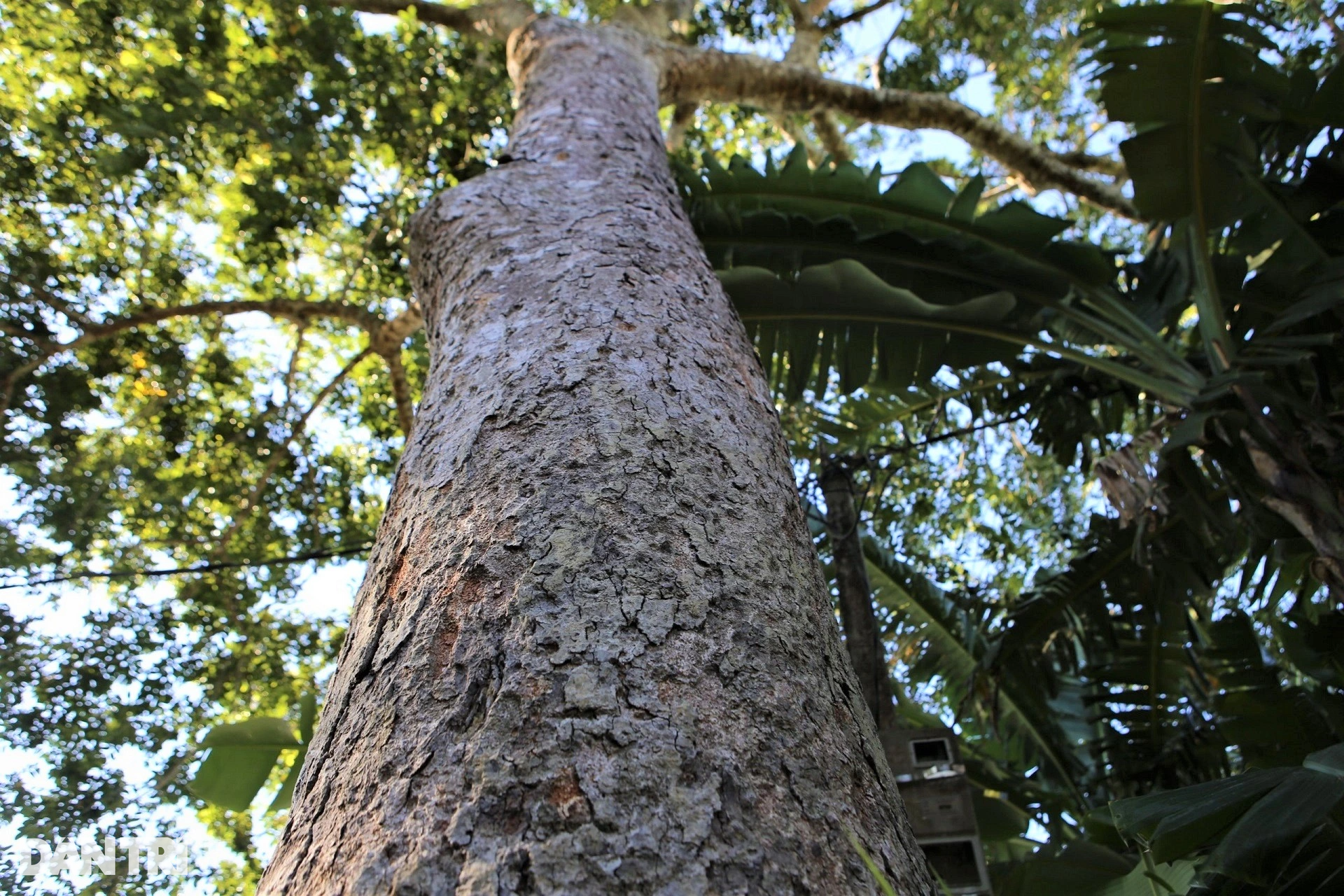
Canarium, scientifically known as Black Melaleuca, is a large native tree 20-30m tall, 40-50cm in diameter at breast height; straight round trunk, high branches; thick, wide canopy, evergreen.
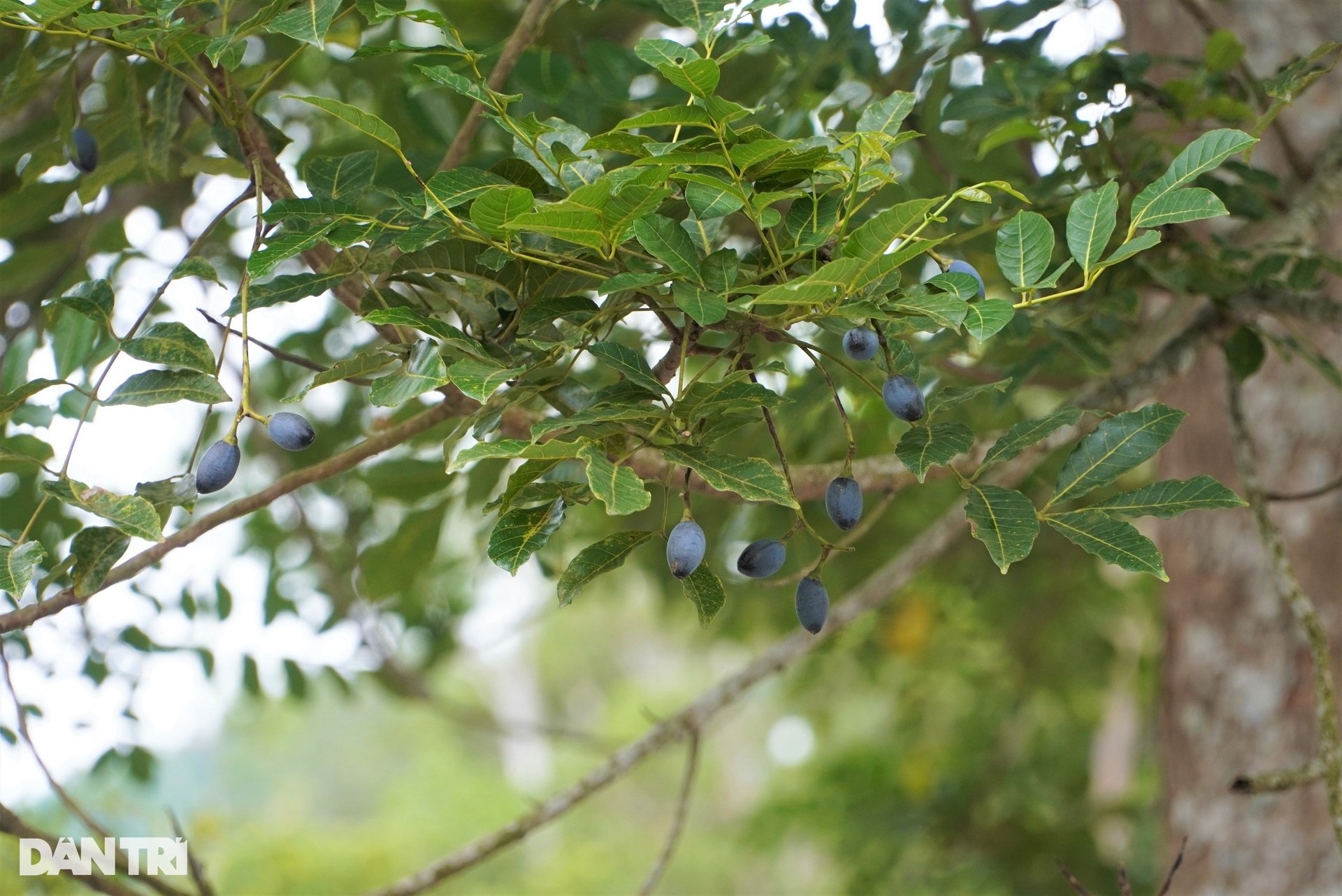
Black canarium fruit grows on the small branches of the tree. This fruit is diamond-shaped, pointed at both ends, white when young, and turns black or dark purple when ripe. In the past, local people grew canarium only for its wood, the fruit was only used as a rustic dish.
In recent years, canarium fruit has been sought after as a specialty. Mountain people have since had additional income from this home garden plant.
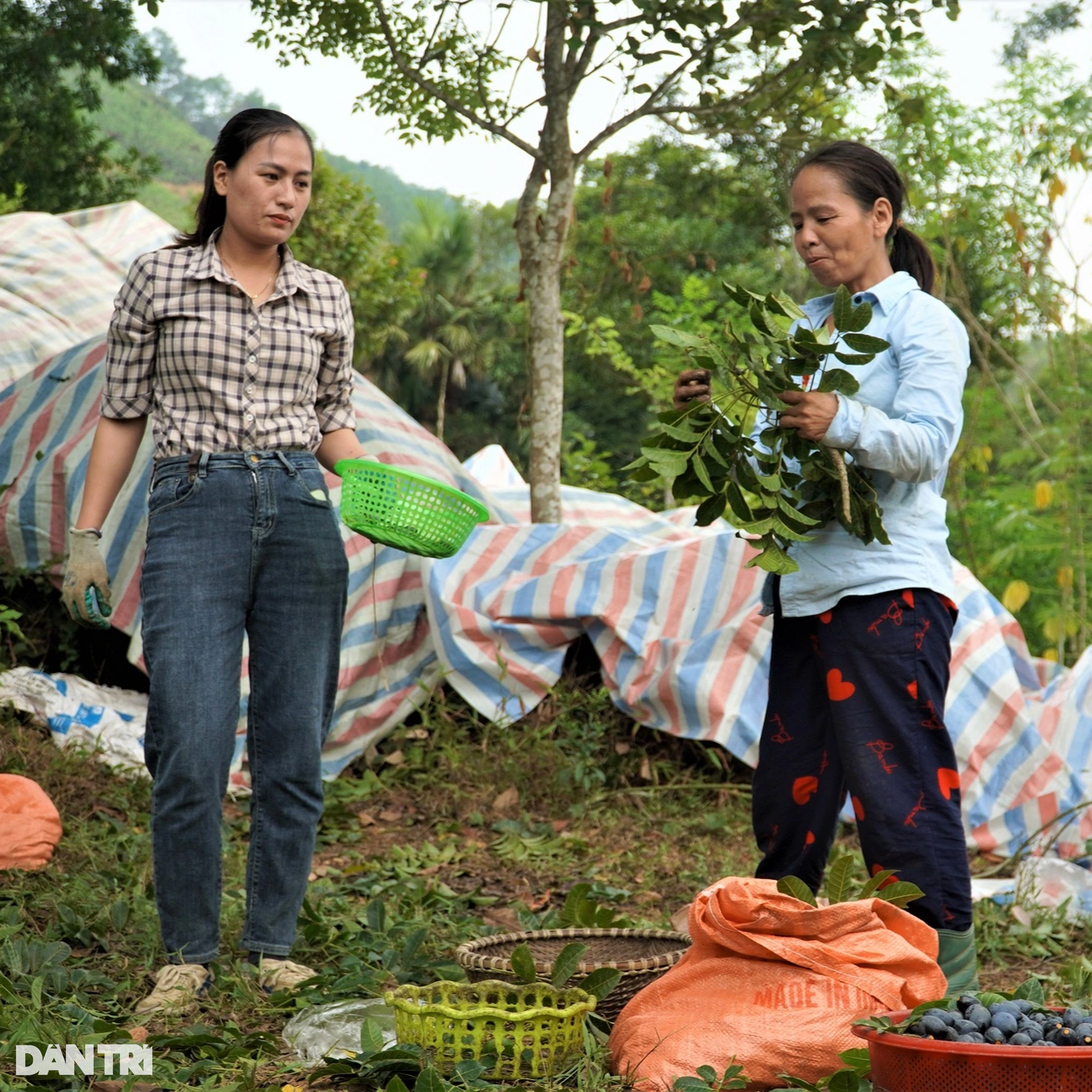
The canarium harvest season starts from July to around September of the lunar calendar. At the beginning of the season, traders come to the garden and order the whole tree. After assessing the number of fruits on the tree, the traders will lower the price and finalize the payment.
One morning in late August, Ms. Dang Thi Khanh Ly (standing on the left, 33 years old, residing in Son Ninh commune, Huong Son) went to the garden of Ms. Nguyen Thi Hoa's family (48 years old, Kim Thuy village, Kim Hoa commune, Huong Son district) to harvest canarium.
Mrs. Hoa’s family has a canarium tree that is over 20 years old and about 25 meters high. Ms. Ly had previously paid Mrs. Hoa 5.7 million VND to buy all the fruit on this canarium tree.
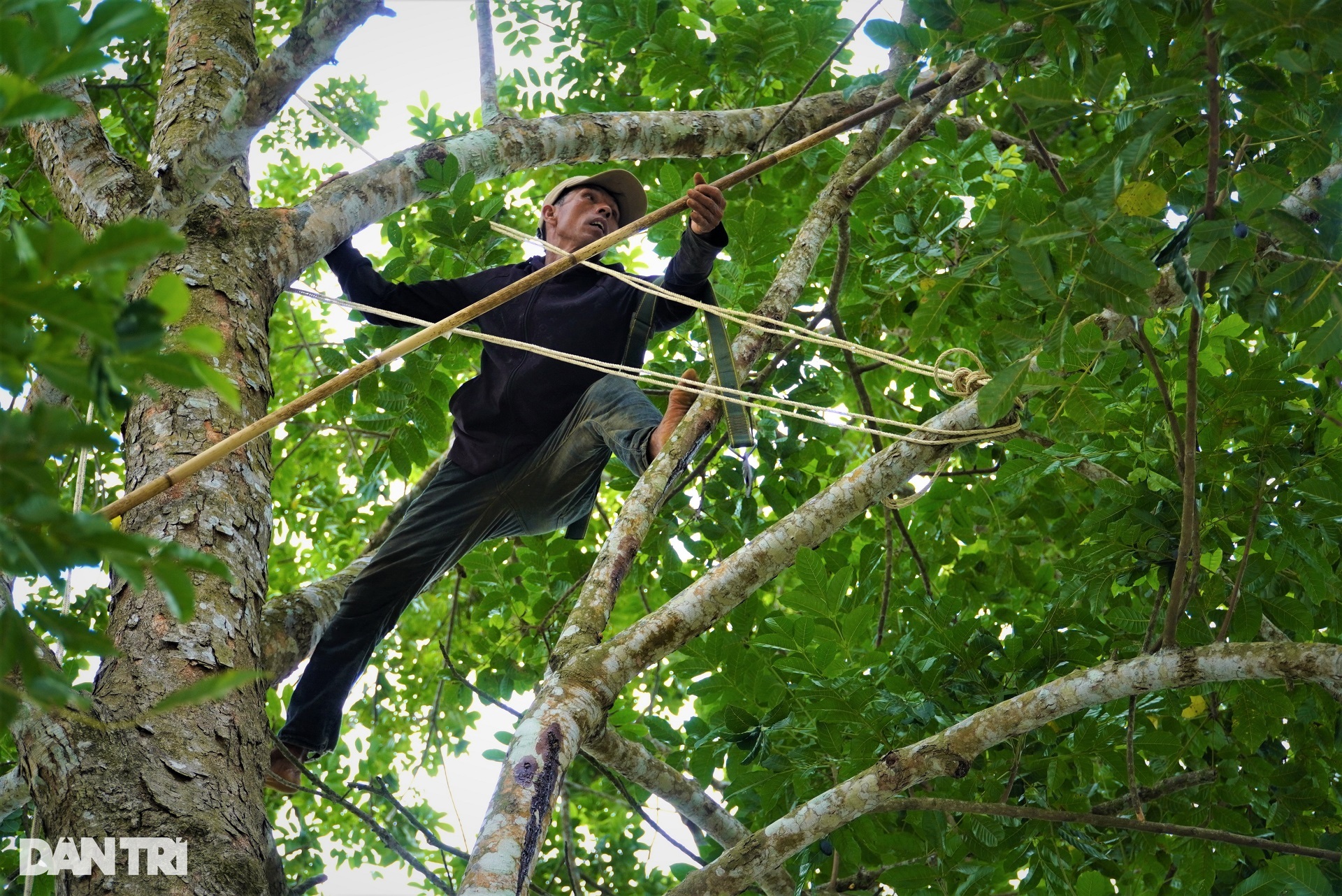
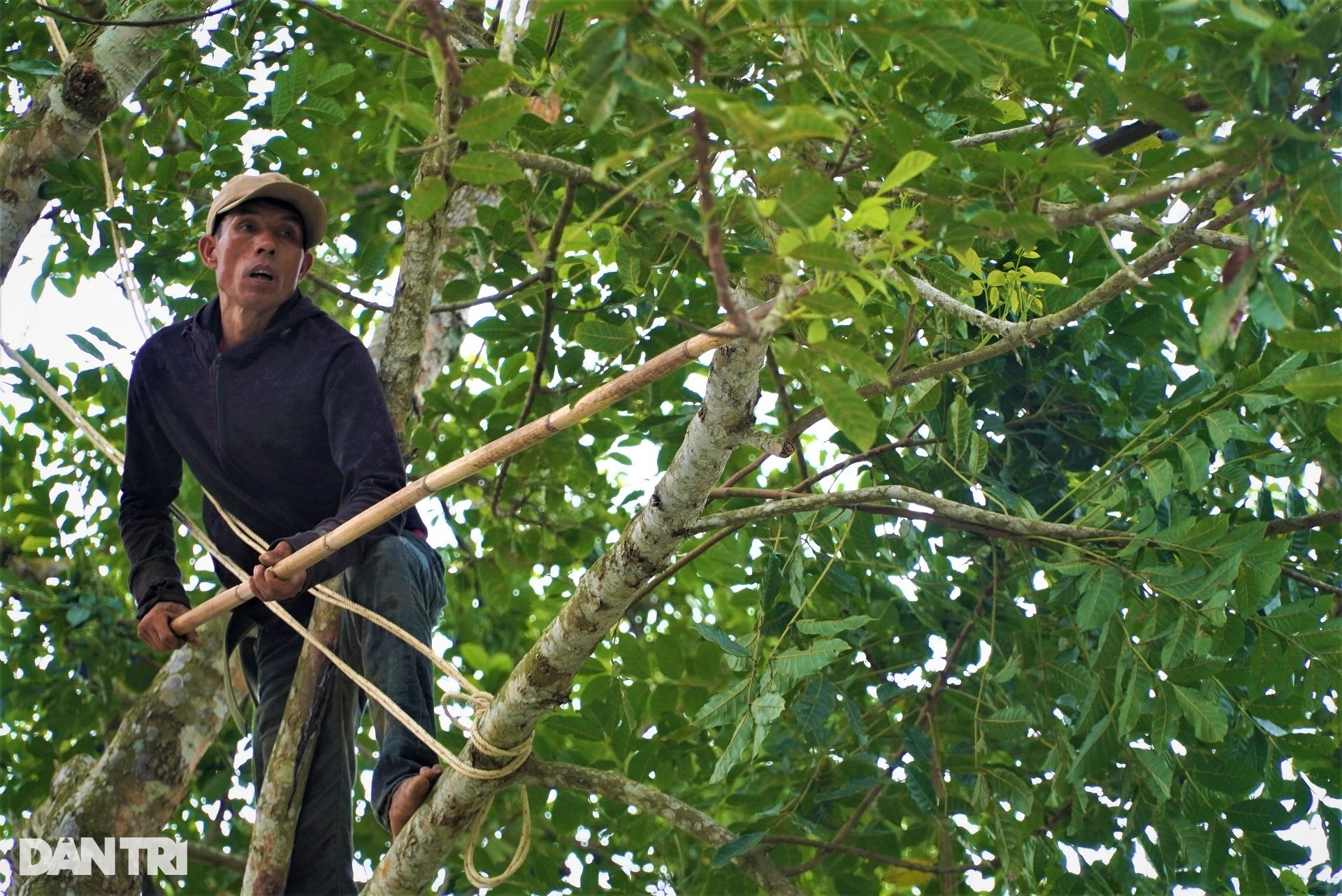
Mr. Pham Thanh Luong (46 years old, resident of Son Ninh commune) was hired by Ms. Khanh Ly to climb trees to pick canarium fruits for a salary of 800,000 VND/day. This man has decades of experience in picking canarium fruits.
To work on the tree for hours, Mr. Luong uses a belt tied to the tree for safety. Ropes are tied from branch to branch so he has something to lean on when moving, rolling from branch to canopy.
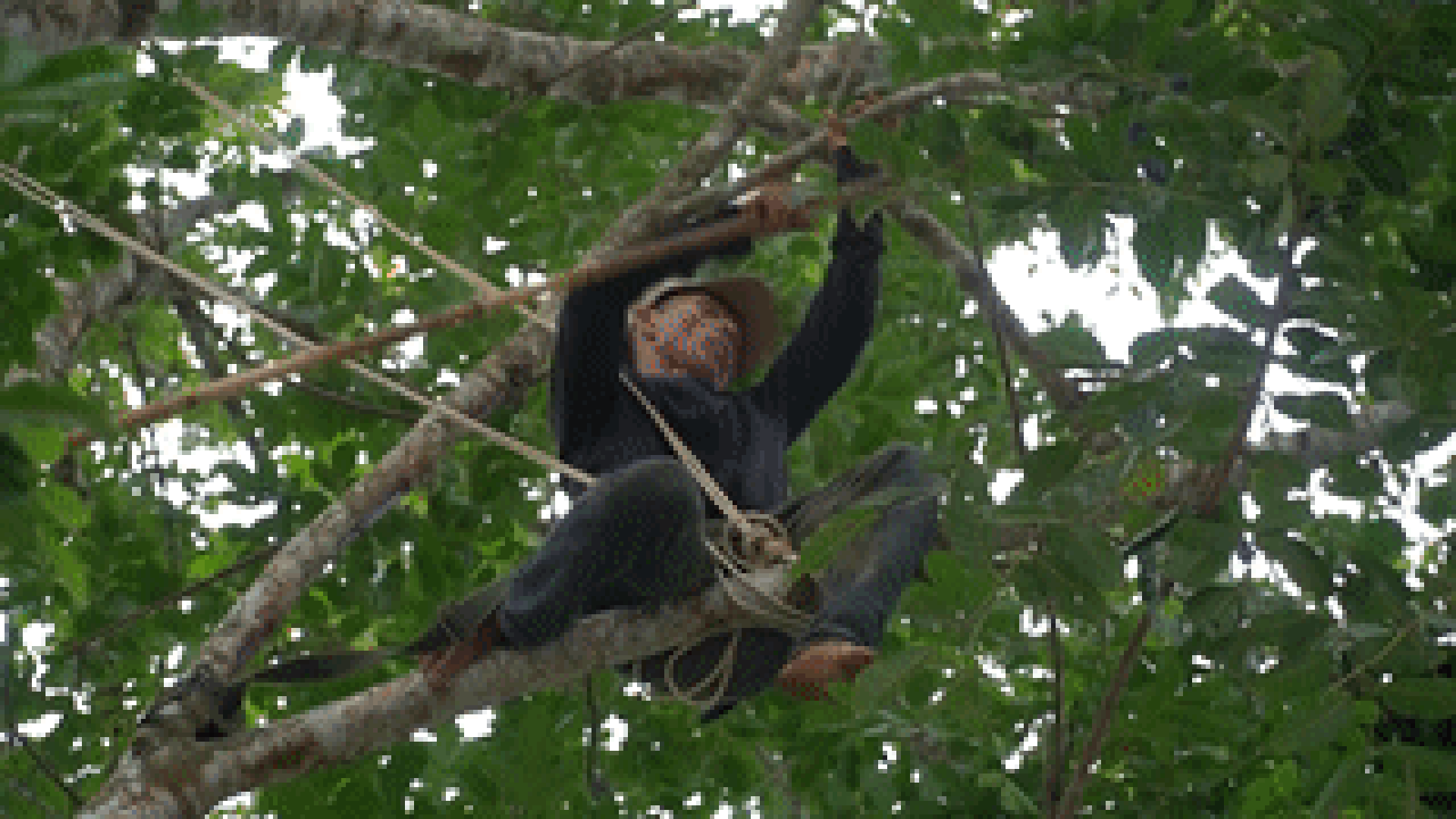
Standing on tree branches reaching more than 20 meters high, Mr. Luong used a bamboo pole more than 6 meters long with a sickle attached, pulling each branch hard to make the canarium fruit fall to the ground where a tarp was spread out to catch them.
"This job is very hard and dangerous, requiring good health, endurance and experience," Mr. Luong shared.
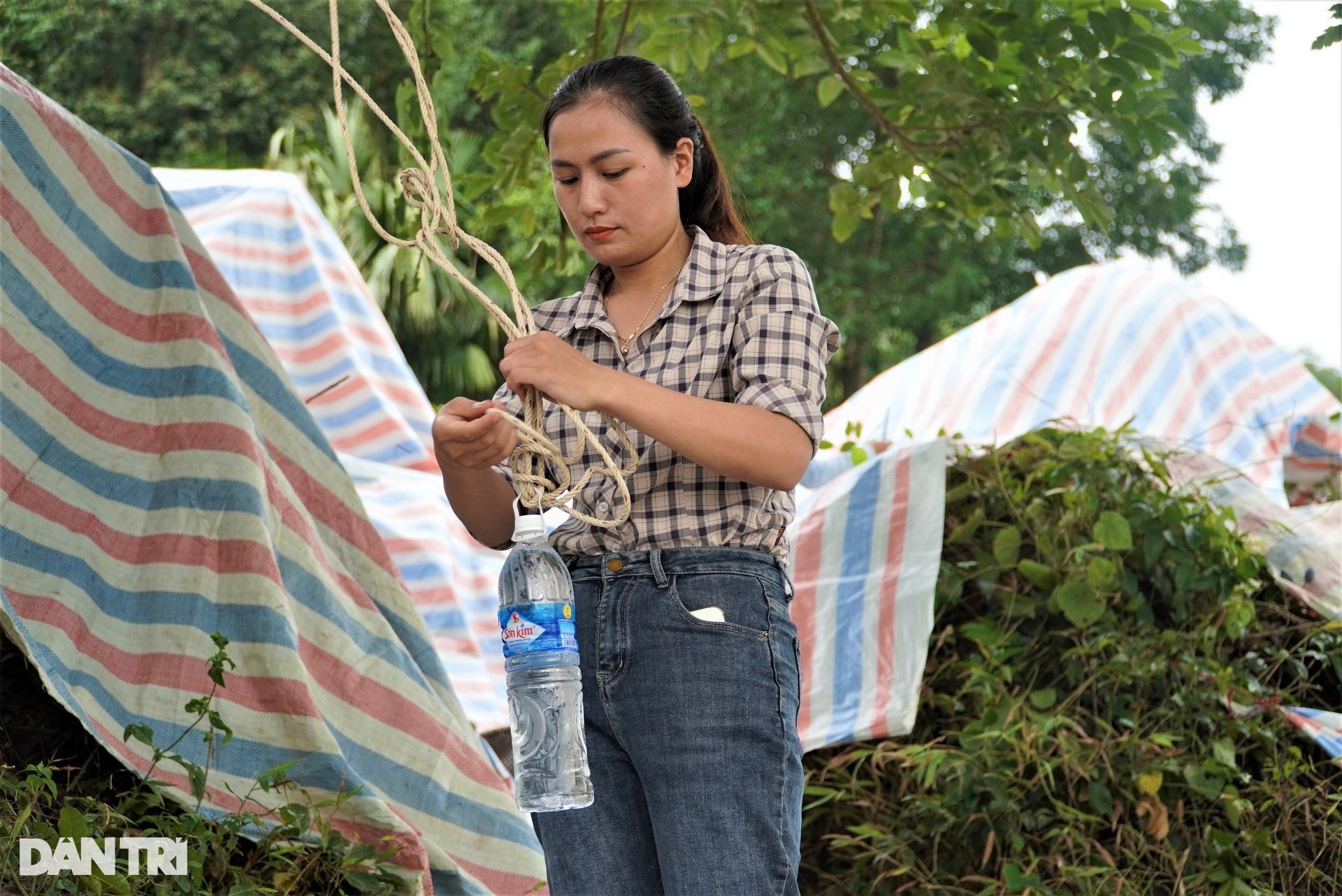
When thirsty, Mr. Luong called and let down a rope from the tree. The person below tied a bottle of water to supply the worker.
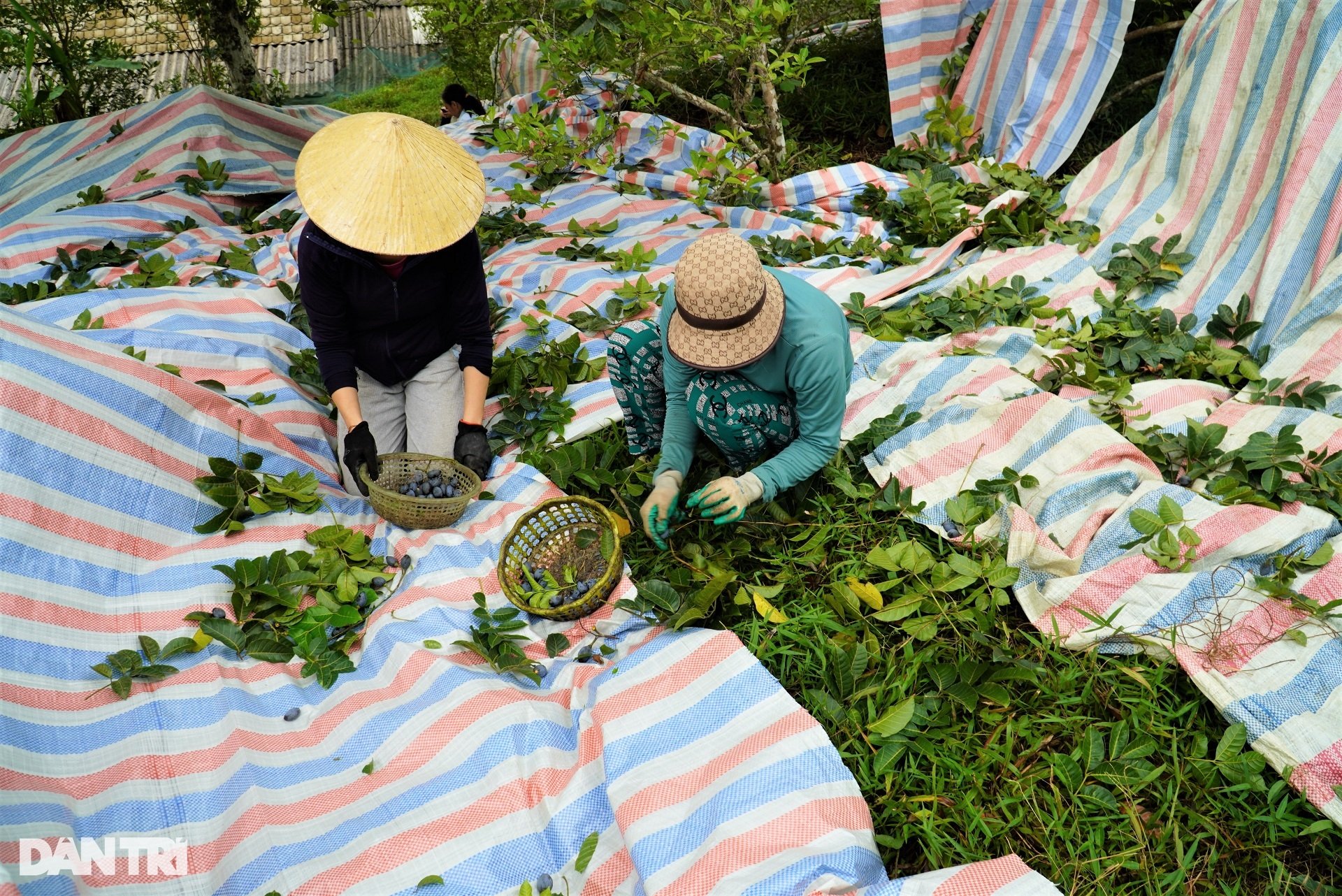
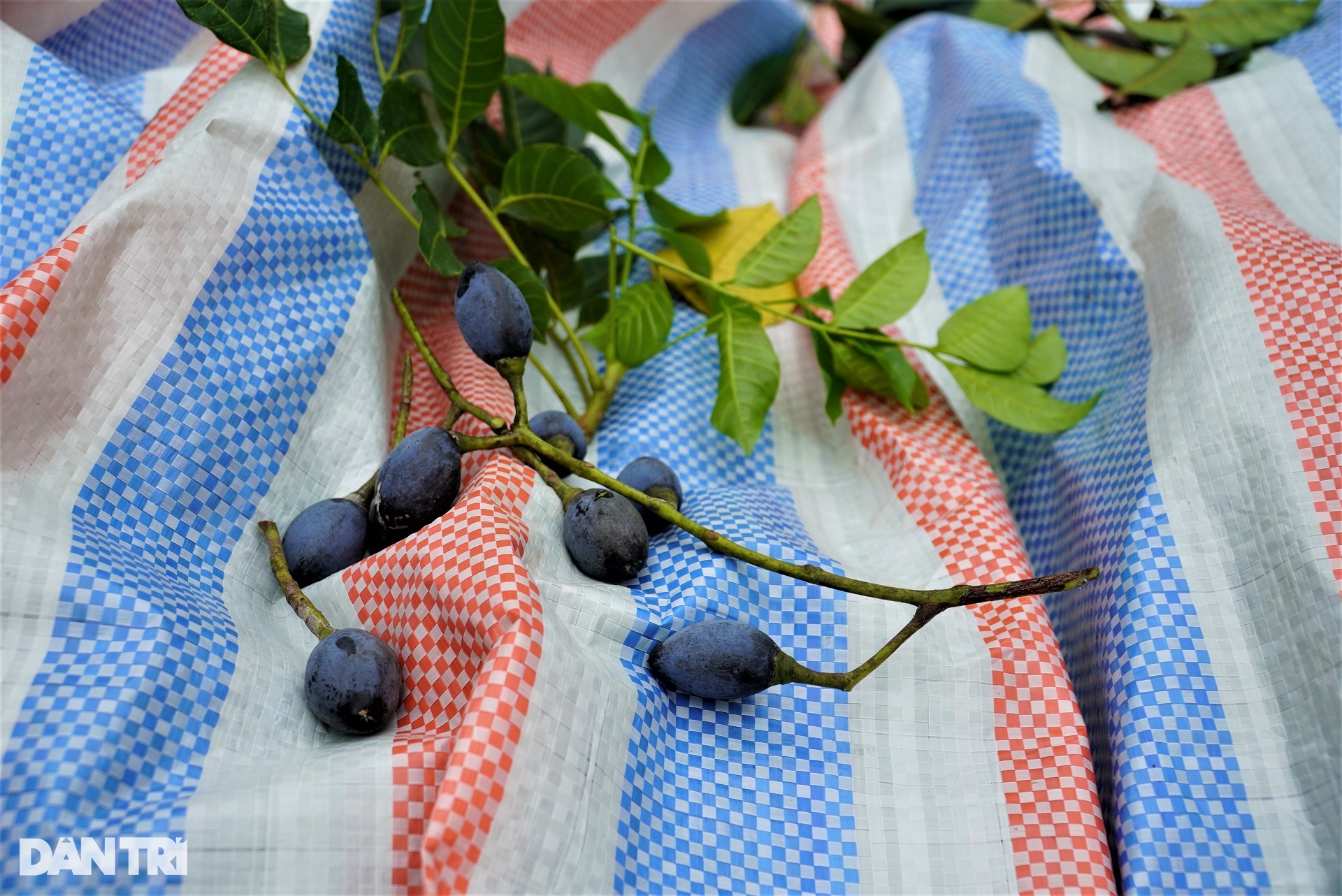
Around the canarium trees, harvesters spread out many large tarps to catch falling fruit, avoiding bruising and damage.
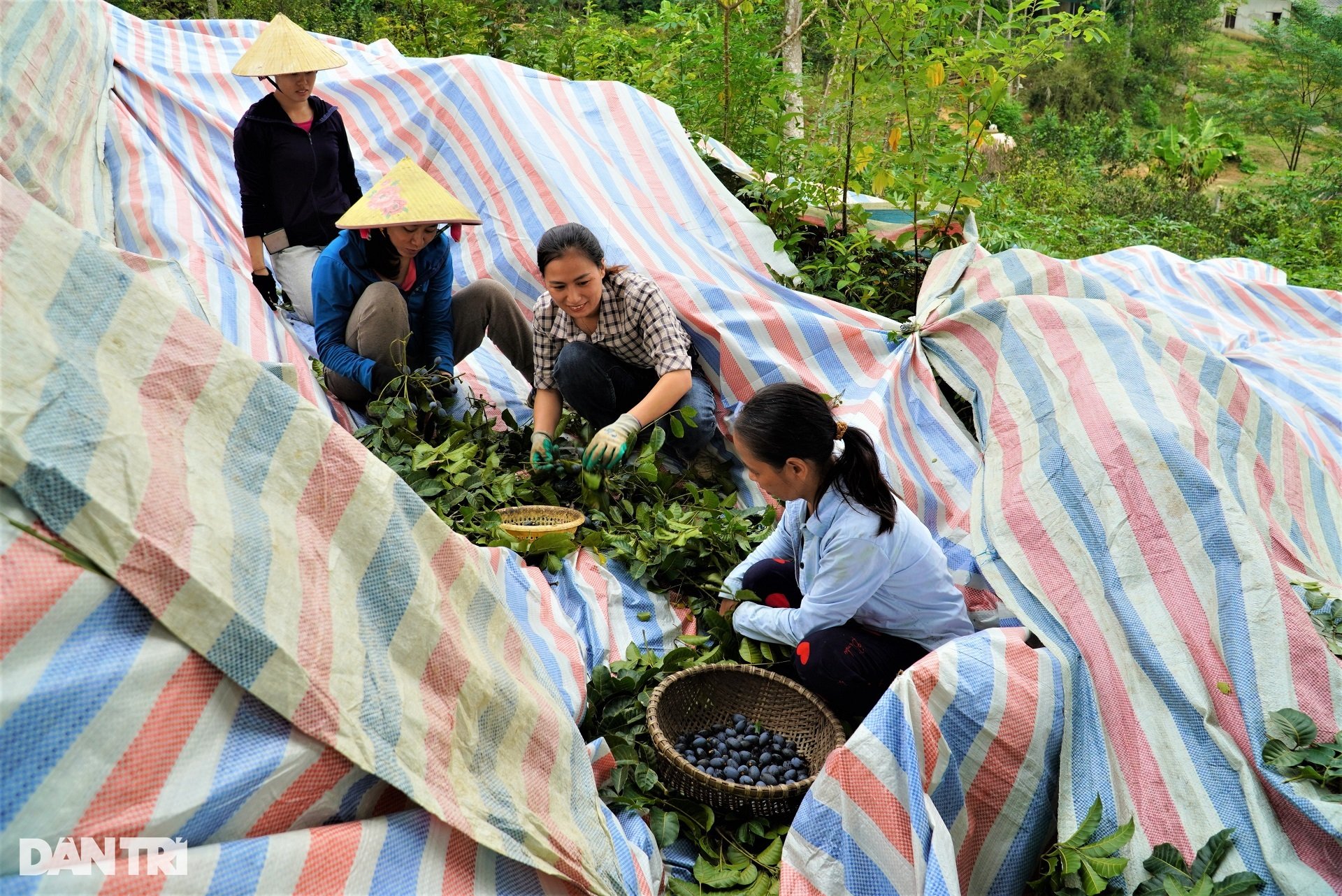
The canarium harvest season also creates jobs for many local women. Each woman is paid 200,000 VND by traders for each canarium gathering trip.
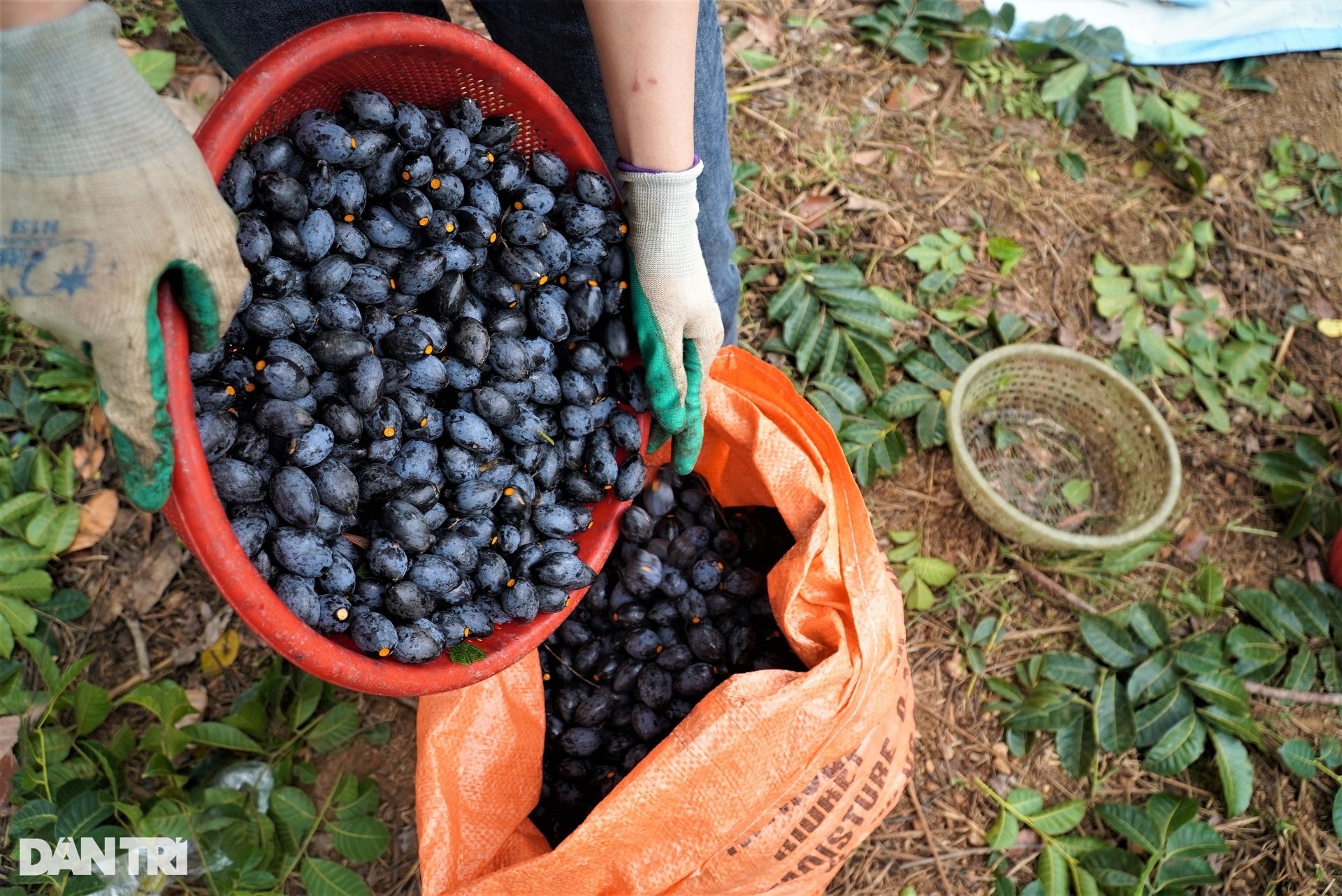
After being collected, the canarium is put into sacks and transported back. This year, fresh canarium fruit costs between 90,000 and 120,000 VND/kg, depending on the size.
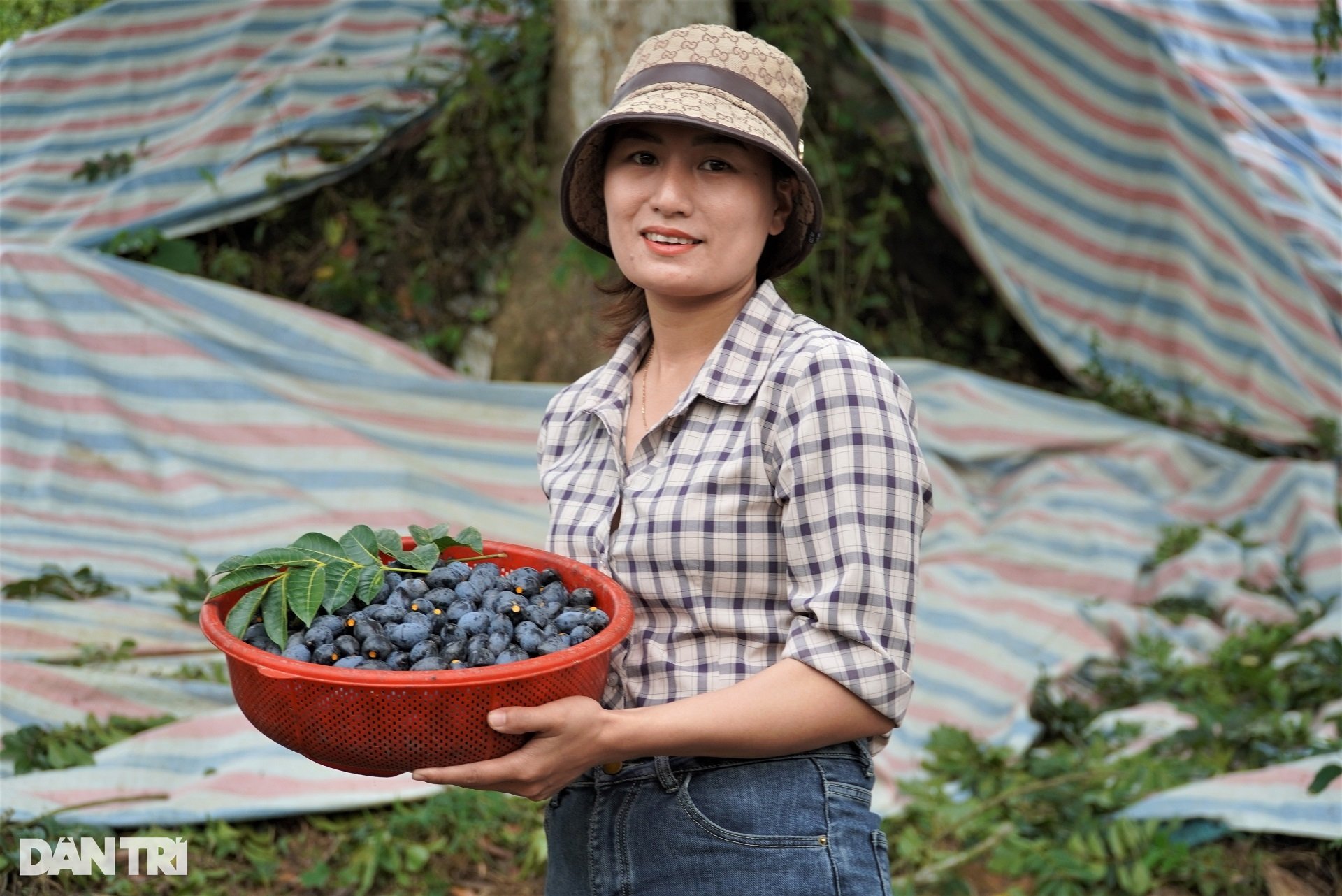
"One tree is estimated to yield 100 kg of fruit. This season, I plan to buy more than 5 tons of canarium. After bringing it back to process and package, I will sell it to customers in and outside the province. This product is very popular, in high demand, so there is no need to worry about consumption," Ms. Khanh Ly shared.
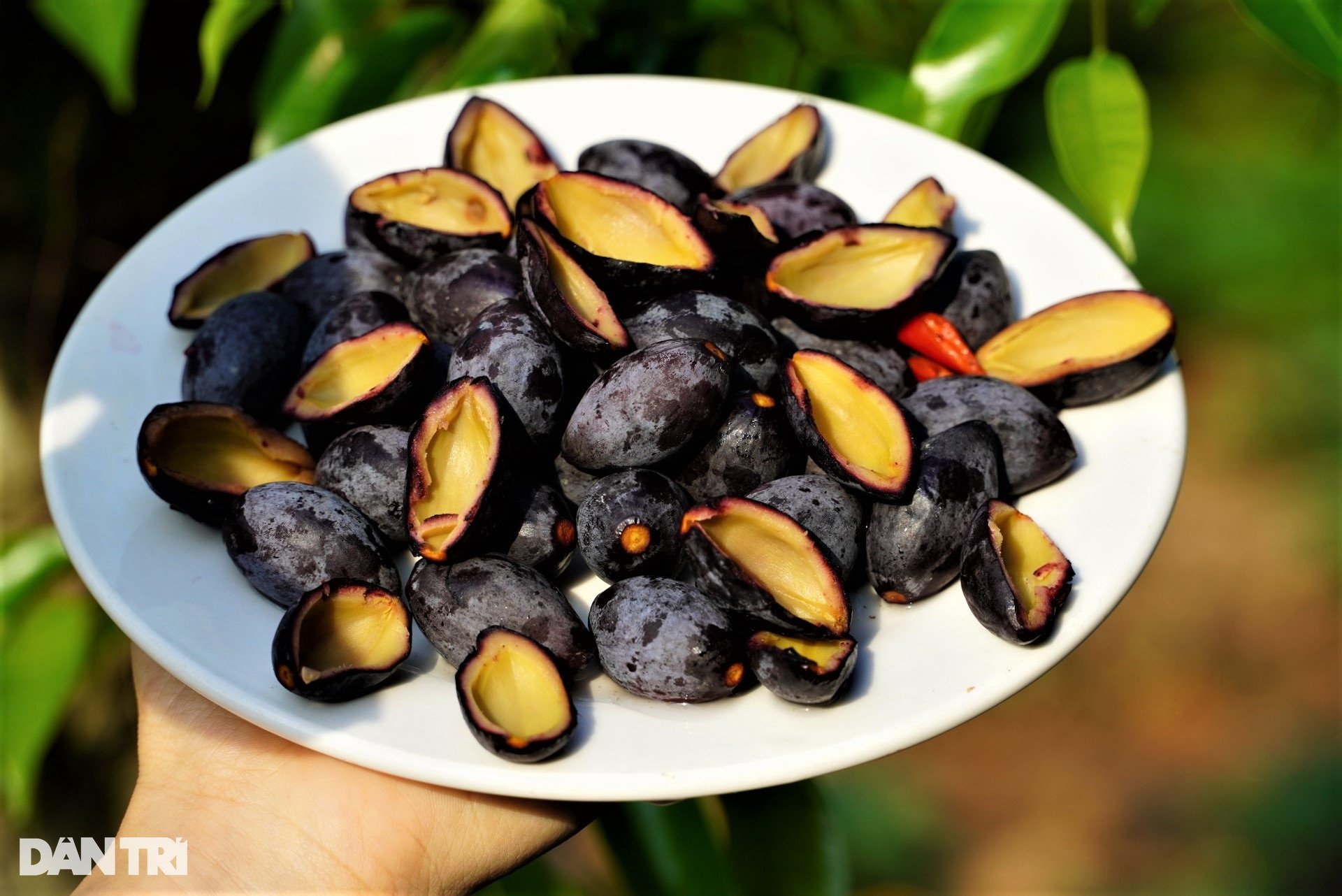
According to the experience of local people, to process canarium into a delicious dish, the fruit must first be stewed in hot water at a temperature of about 70 degrees Celsius. After soaking for about 20 minutes, the canarium flesh softens, the thin skin is easy to peel and the seeds are separated, when eating, add a little seasoning.
Canarium has a characteristic aroma, is fatty, rich, and nutritious. This fruit is processed into many rustic dishes such as stewed with pork, salted, sticky rice with canarium, stir-fried with bee pupae...
Source link


![[Photo] Bustling Mid-Autumn Festival at the Museum of Ethnology](https://vphoto.vietnam.vn/thumb/1200x675/vietnam/resource/IMAGE/2025/10/4/da8d5927734d4ca58e3eced14bc435a3)



![[Photo] Solemn opening of the 8th Congress of the Central Public Security Party Committee, term 2025-2030](https://vphoto.vietnam.vn/thumb/1200x675/vietnam/resource/IMAGE/2025/10/4/f3b00fb779f44979809441a4dac5c7df)
![[Photo] General Secretary To Lam attends the 8th Congress of the Central Public Security Party Committee](https://vphoto.vietnam.vn/thumb/1200x675/vietnam/resource/IMAGE/2025/10/4/79fadf490f674dc483794f2d955f6045)
















































![[VIDEO] Summary of Petrovietnam's 50th Anniversary Ceremony](https://vphoto.vietnam.vn/thumb/402x226/vietnam/resource/IMAGE/2025/10/4/abe133bdb8114793a16d4fe3e5bd0f12)

![[VIDEO] GENERAL SECRETARY TO LAM AWARDS PETROVIETNAM 8 GOLDEN WORDS: "PIONEER - EXCELLENT - SUSTAINABLE - GLOBAL"](https://vphoto.vietnam.vn/thumb/402x226/vietnam/resource/IMAGE/2025/7/23/c2fdb48863e846cfa9fb8e6ea9cf44e7)


































Comment (0)